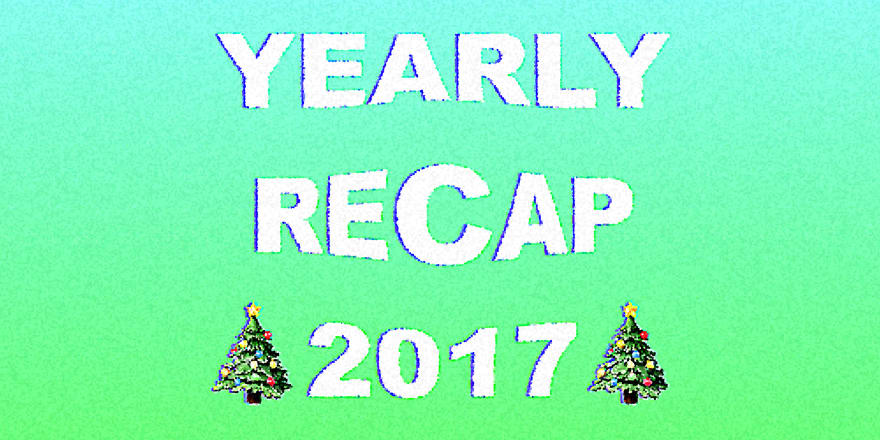Hi!
In this article I’m going to cover what happened in 2017 and what will happen in 2018. And also, I’ve created a path for you to follow, so you can read my articles in order to digest them easily.
2017
After working days, nights, weeks, weekends, and months fulltime educating people about Go for 3 months, this happened:
- I wrote 100,000 words in total (After edits: 20,000 words in total)
- 2.500+ unique people followed me
- 1.300+ people followed my blog
- 500+ people subscribed to my e-mail list (Join here)
- 800+ people followed me on Medium
- 500+ people followed me on Twitter
- 100+ subscribers in 10 days to the newly created Learn Go Programming public Slack channel (Join here)
- I created dozens of visuals, animations and code exercises
- I post hundreds of educational tweets
- Some of my posts become Reddit and Hackernews top-posts and shared by many other publications
- Many great people have reached and offered great opportunities for me (even joining to Google!)
- Dozens of people have said to me that they learned Go through my work
2018 Goals
Some of my 2018 goals are about earning a little bit of money (somehow?) because I need to drink coffee too.
- “ Any suggestions? Please tell me. ”
- Releasing my online course (Started doing it — exciting!)
- Releasing screencasts which I’d talk about everything Go
- Creating a Youtube channel
- Writing a book about Go
- Continue creating more awesome free content
👶 My Blog is Very Young
It’s just ~3 months old — I started doing it publicly since the last quarter of 2017. It has always been my goal to teach people what I know and I’m glad that I’m doing it now.
🤩 My Vision
My vision has always been to create the most concise, information-packed, visual and simple to digest articles that you can find in one place.
I’ve created this blog because the information about Go is dispersed in many places, so, you need to search for it in too many places. Also, many articles are too complex or just shallow or hard to understand for many beginners and even for intermediate-level gophers. I’m trying to reduce these problems.
❤️ 💜 💙 💚 💛
Allright! Now, I’m going to summarize most of the content I’ve created about Go last year. I’m very happy that I could be able to help people. Enjoy!
All articles from 2017
You may read the articles in the order I‘m listing here. Almost all of my articles include explanations, tips and tricks, visuals and code exercises which you can try online.
-
Overview
-
About Go Language — An Overview
- Go ecosystem and the language’s overview.
-
About Go Language — An Overview
-
Packages
-
Introduction to Go Packages
- What is a package?
-
How to use packages
- How to use your own, others’ and Go standard library’s packages?
-
Special Packages and Directories
- About internal, main, library and vendor directories.
-
Organize your code with packages
- How to design a Go program with packages.
-
How to decouple your packages
- How to increase code maintainability with packages.
-
Go Packages Rulebook
- Summarizing the rules for reference.
-
Fix your $GOPATH and $GOROOT
- How to configure them and what they do.
-
Introduction to Go Packages
-
Variables
-
Visual guide to Go Variables
- Introduction to variables and declaration styles.
-
Short-variable declarations rulebook
- Tips and tricks about how to use short-variables. Intermediate-level.
-
Visual guide to Go Variables
-
Constants
-
Visual guide to Go Constants
- Introduction to untyped and typed constants.
-
Ultimate Visual Guide to Go Enums
- How to define an enum in Go and how to use iota?
-
Visual guide to Go Constants
-
Functions
-
Funcs — Baby-Gopher’s Visual Guide
- Introducing Go functions with examples.
-
The Zoo of Go Functions
- Introductory tour of anonymous, higher-order, closure, concurrent, deferred, variadic funcs and methods.
-
Ultimate Guide to Go Variadic Funcs
- A variadic func accepts variable number of input values — zero or more. The article covers everything about variadic funcs.
- Defer Simplified with Practical Visuals
- Introduction to deferred functions. Includes deferred funcs, multiple defers, deferred methods, deferred closures, and other examples.
-
Defer Internals — Quick Look
- An intermediate-level article. Asking the question: Are defers run after or before the func returns?
-
5 Gotchas of Defer in Go (Golang) — Part II
- Beginner-level article which covers some basic pitfalls of deferred funcs.
-
5 Gotchas of Defer in Go (Golang) — Part I
- Intermediate-level article which covers some more advanced pitfalls of deferred funcs.
-
Funcs — Baby-Gopher’s Visual Guide
I also have started tweeting almost daily 2 months ago. I tweet a lot of tips and tricks and exercise questions about Go. I see that it helps many people out there.
Check them out here.
I’m also creating an online course for Go → Join to my newsletter.
- Let’s stay in touch weekly for new tutorials and tips.
- 👍 Subscribers will get the discounted price (and even free) for my course when it’s get published.





Top comments (2)
I really want to learn golang, this is the year which I want to improve my skills with this language and after read this article rankred.com/new-programming-langua... I know golang is the best option, thanks for your articles and tips in twitter, I'm wating for you course and know about your youtube channel
Thanks Gustavo, this year you'll definitely learn Go and you'll make at least one project with it.